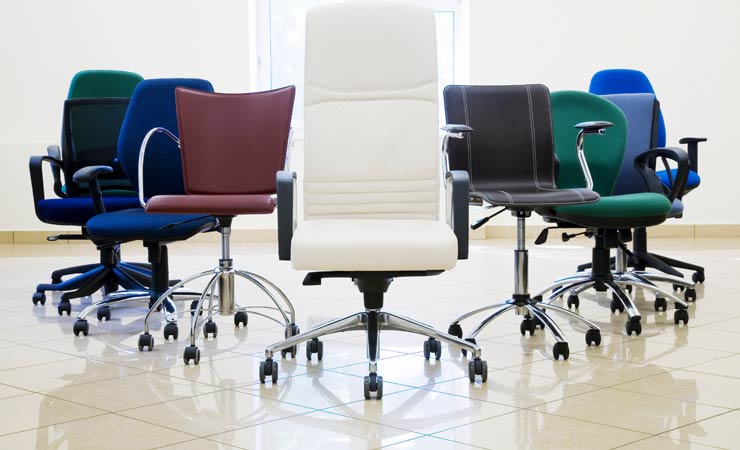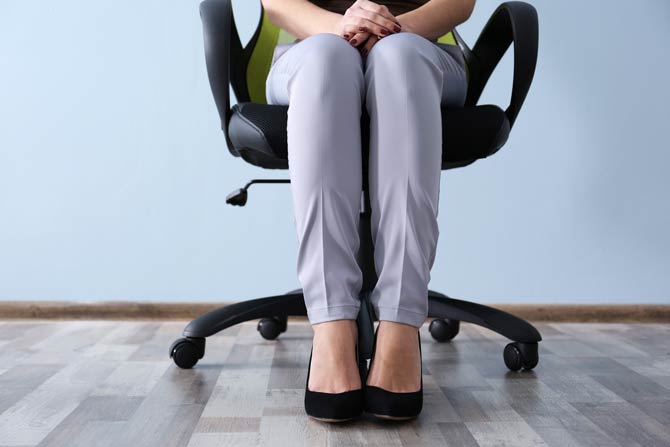
Back pain is one of the most common widespread diseases in Germany. There are many reasons for these complaints.
But sitting in front of the computer for hours and a passive working style in the office contribute significantly to back pain.
Prevent health problems
Cramps and tension often arise because the human body actually needs regular exercise. Sitting for long periods, on the other hand, puts a strain on the supporting skeleton and muscles. In order to prevent health problems, it is all the more important to select a well-suited office chair.
Sitting for hours – possibly even with a hunched back – puts a lot of strain on the joints, intervertebral discs and muscles.
To make matters worse, the sitting position has a negative effect on digestion, concentration and breathing. Anyone who spends many hours a day “lounging” in front of the PC puts a lot of strain on the neck and lumbar vertebrae. This is followed by muscular tension or poor posture.
Constantly changing sitting positions, on the other hand, have a positive effect on health. This creates vibrations in the spine, which stimulate the complex back muscles. Joints running along the spine are constantly in motion.
In addition, changed sitting positions lead to the blood circulation, oxygen supply and metabolic processes of the brain being stimulated. This automatically increases concentration and attention.

For a better working atmosphere
In order to prevent unpleasant health problems, an ergonomic and back-friendly office chair also plays an important role. After all, a back-friendly swivel chair or executive chair not only pays off in terms of health.
Since many tasks are easier to do with a good office chair, the chairs automatically make work easier. In addition, good office chairs aim to reduce protective or incorrect posture to a minimum and to counteract disturbances in the movement process.
Consider individual preferences
While an orthopedic office chair supports back health, an incorrectly selected model can, in the worst case, cause considerable damage.
It is all the more important to select a chair that best meets individual needs.
In addition to load times, personal preferences and the type of tasks to be performed have a significant impact on the choice of a suitable model.

Advantages of an ergonomic office chair
A major advantage of an ergonomic office chair is that its users can make individual adjustments. Particular attention is paid, for example, to adjusting the seat height.
Office chair users should adjust the seat height so that the thigh falls slightly towards the knee and forms a line. This seating position should be geared towards allowing some adjustment up and down. Equally important is seat depth springing to cushion body weight when sitting down.
With or without head and neck support?
An ergonomic desk chair is also characterized by a seat depth. This seat depth is reached when you have secure contact with the backrest and still fit three to four fingers held crossways between the front edge of the seat and the back of your knees.
Depending on weight and height, different seats are required.
The selection depends on the subjective feeling. The extent to which a head or neck support is required depends on the personal preferences of the buyer. However, if you decide to use this extra, it is important that the depth and height of the support must be adjusted to your own body proportions. A non-adjustable head or neck support is not a good fit for an office chair.

Features of the backrest
It doesn’t matter whether it’s a swivel chair or a typical executive chair: With every office chair it is important that the backrest is adapted to the size and shape. In order to be able to stretch backwards while working, the upper part of the backrest must not be rounded backwards or too wide. Movable suspensions also offer advantages.
In addition, every good backrest is equipped with a so-called lumbar support. Please make sure that this lower and forward-curved area is independently height-adjustable and its shape is adapted to the entire backrest. It is important that this lumbar support creates an upright and clearly perceptible hold.
Tips for choosing armrests
With a good office chair, it is common for the user to be able to adjust the height and width of the armrests. This makes it easy to optimally adapt the armrests to the needs of the user. The size of the armrests also plays an important role.
Experience has shown that when you roll up a chair, you should first hit the edge of the table with your stomach and not with the armrests.
An optimal height adjustment of the armrests means that the shoulders are relieved without pushing them up. The width setting should be selected in such a way that the arms are neither spread nor pinched. It is also important that the armrests are stable enough to support yourself when getting up. In the best case, the armrests are not too long.
Movement concept for the back
In general, the more time a person spends on the office chair, the higher the demands on seating comfort should be. The mobility of the seat and the settings and shape of the backrest should aim to allow users to adjust their sitting posture as often as possible.
Nevertheless, buyers should also keep in mind that there is no such thing as the ultimate perfect office chair. Instead, it is important to listen to your gut feeling and also to orientate yourself on testimonials from other consumers.
Source: https://blogg.de/welches-buerostuhl-modell-passt-zu-mir/


